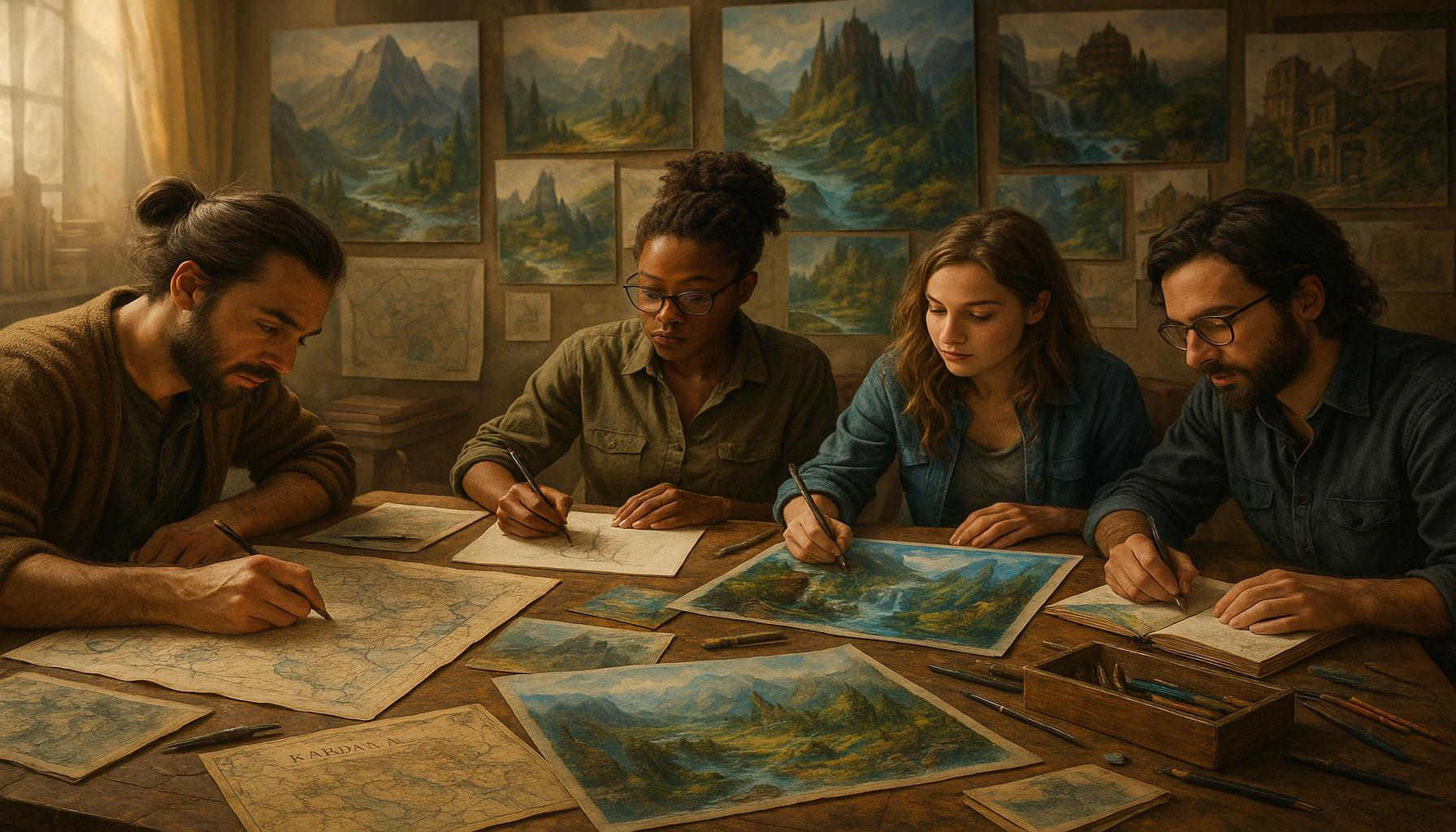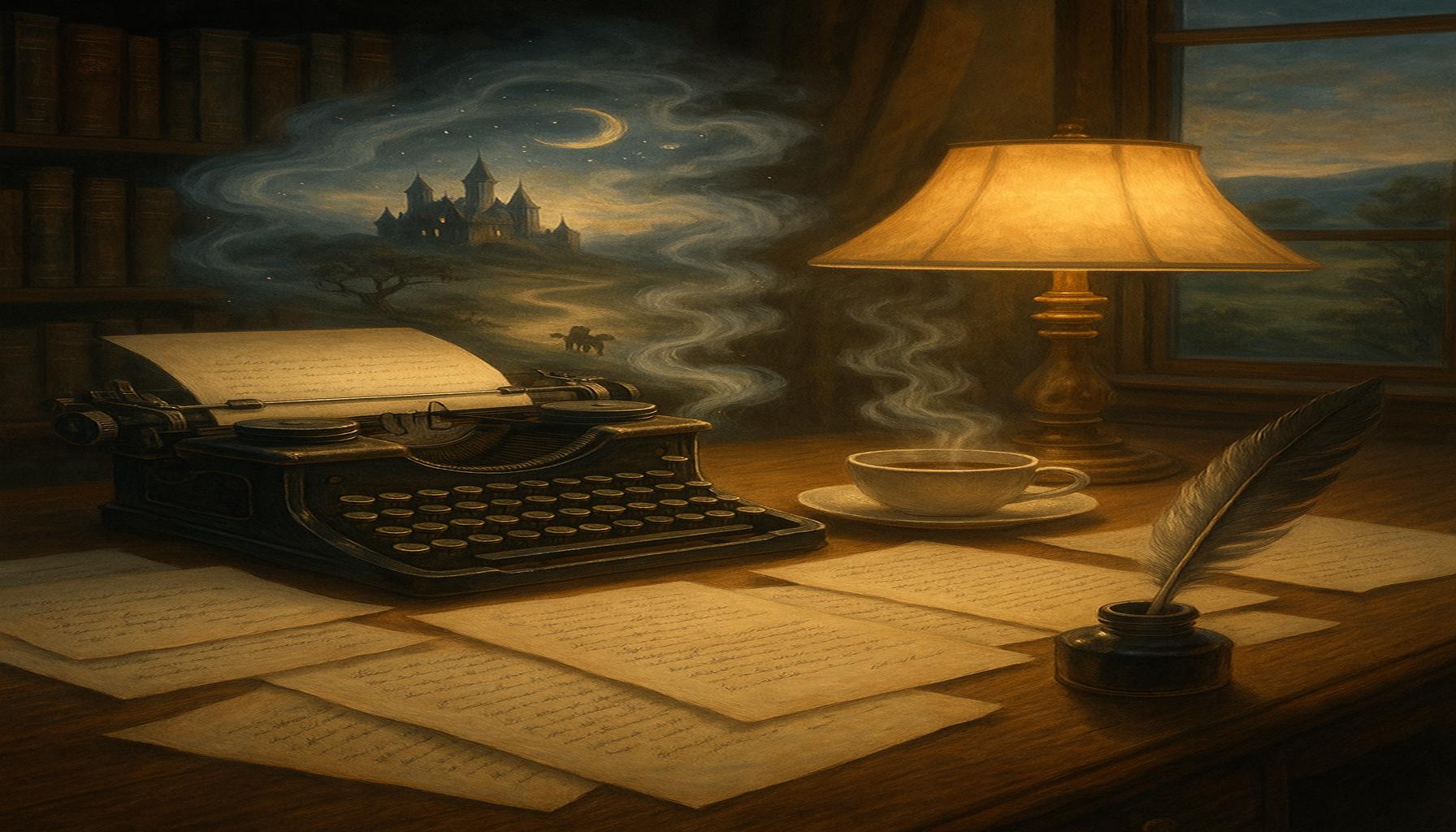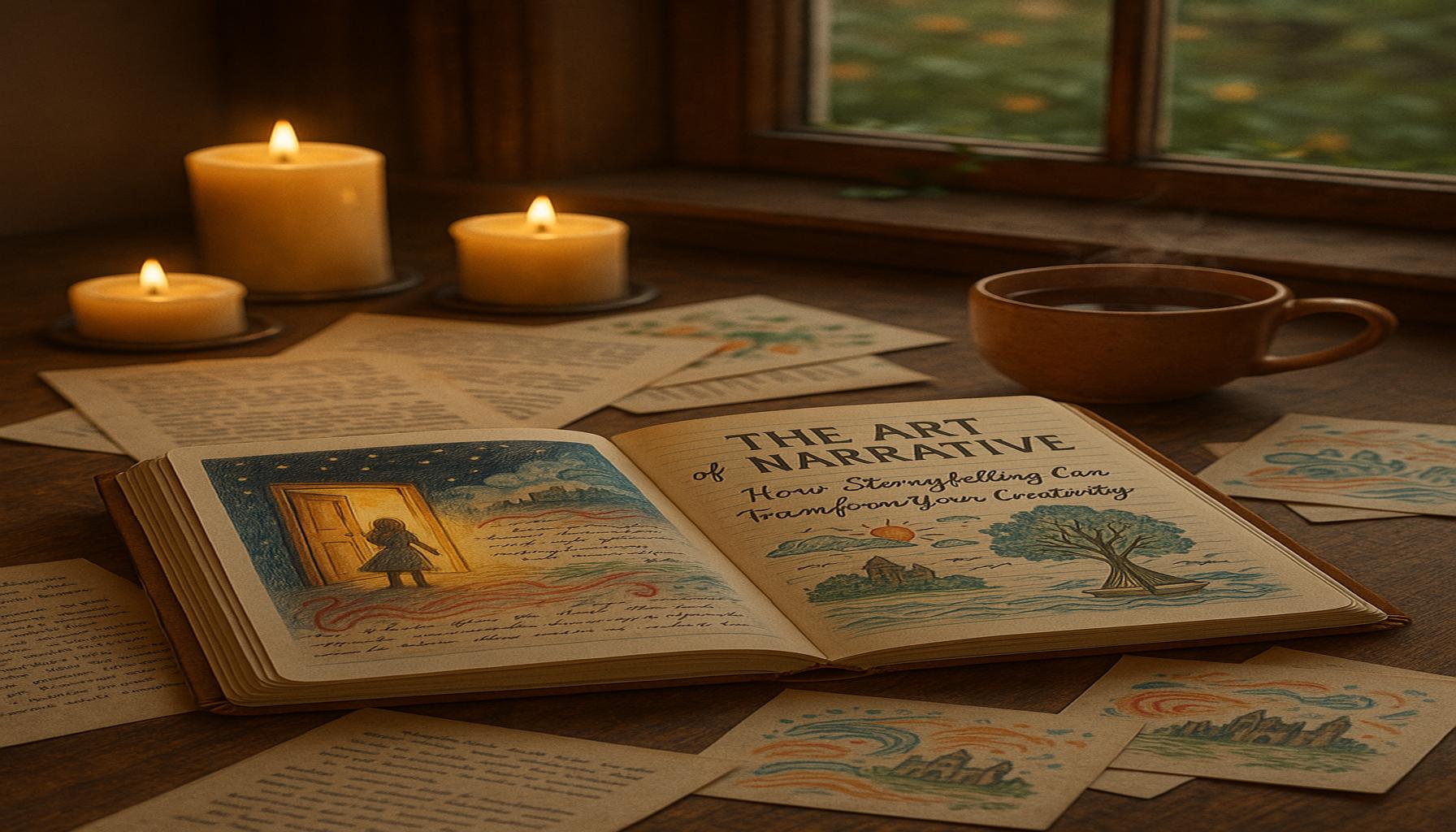Creating Worlds: The Importance of Scenario Development in Fiction

Understanding the Essence of Scenario Development
In the realm of fiction, the heart of a captivating story lies in its world-building. A well-crafted scenario invites readers into a rich tapestry of settings, characters, and conflicts that ignite the imagination. As writers, honing these skills can transform a mere narrative into an immersive experience that resonates with audiences on multiple levels.
The importance of scenario development cannot be overstated. It serves as the foundation for:
- Character Development: A vibrant world shapes and evolves characters, making them relatable and dynamic. For example, a character raised in a bustling, diverse urban environment may have different values and motivations compared to one from a small, close-knit rural community. This rich backdrop allows for unique character arcs that maintain reader interest.
- Plot Advancement: Dynamic settings can drive the plot, creating tension and conflict necessary for engaging storytelling. Consider the impact of a looming storm in a thriller novel; it not only adds urgency but can also serve as a catalyst for character confrontations and plot twists.
- Thematic Depth: Environments can mirror themes and serve as powerful tools to enrich the narrative. In post-apocalyptic tales, the desolation of the landscape often reflects the internal struggles of the characters, reinforcing themes of survival, loss, and resilience.
Successful authors often draw from their surroundings to create believable and intricate worlds. Notable examples abound in classic literature and contemporary fiction:
- J.K. Rowling’s Hogwarts: A magical school that is both awe-inspiring and believable, with characters and events intricately woven into its history and architecture, providing a multifaceted backdrop for Harry Potter’s journey.
- Stephen King’s Maine: An eerie backdrop that profoundly influences his horror narratives. The isolation and unique cultural elements of Maine amplify the chilling circumstances faced by his characters, making each tale all the more gripping.
- Tolkien’s Middle-earth: A meticulously constructed universe complete with its own languages, histories, and cultures, which has captivated fans for decades. The depth of Middle-earth’s lore allows readers to get lost in a world that feels lived-in, making every quest and battle all the more impactful.
As we delve deeper into the significance of scenario development, we will explore how creating worlds not only enhances storytelling but also fosters a strong connection between readers and the narrative. A well-detailed scenario acts as a doorway into the writer’s imagination, and by focusing on vivid locations, sensory details, and cultural nuances, writers can elevate their fiction to new heights. This immersive experience encourages readers to explore broader themes, empathize with characters, and ultimately, stay invested in the story long after the last page is turned. Whether it’s through a stormy night in a haunted mansion or a sprawling futuristic city, effective scenario development can transform simple tales into unforgettable epics.
DISCOVER MORE: Click here to dive deeper into the evolution of digital art
The Mechanics of World-Building
At its core, scenario development is a multifaceted process that goes far beyond merely establishing a backdrop for the narrative. It is about crafting a detailed universe where each detail—from culture and geography to social norms and history—works cohesively to enhance the overall narrative experience. Thoughtfully developed scenarios are essential in drawing readers into a fictional world, allowing them to suspend disbelief and fully engage with the story.
To understand the mechanics of world-building, one must recognize its intricate components, which include:
- Geographic Diversity: The landscape of a fictional world can significantly affect the story’s dynamics. Authors might employ vast deserts, lush forests, or ice-covered mountains to create a rich visual tapestry that influences character actions and plot developments. For instance, a journey across a barren wasteland might symbolize a character’s internal struggle, while vast oceans could introduce themes of isolation and exploration.
- Cultural Nuances: The inclusion of different cultures within a scenario adds layers to the narrative. Writers can draw upon real-world cultures or invent entirely new ones that reflect the values, beliefs, and traditions of their created societies. The practices of a culture—such as rituals, languages, or social hierarchies—can also shape character motivations and conflict within the story. Iconic writers like Gabriel Garcia Marquez have demonstrated this effectively; his magical realism often intertwines everyday cultural practices with extraordinary elements, making the scenario feel authentic and engaging.
- Historical Context: History can be a powerful tool in scenario development. A world with a rich history filled with wars, alliances, and catastrophes lends itself to tension-filled plots and multifaceted characters. As seen in works like George R.R. Martin’s “A Song of Ice and Fire,” history is not merely background but often drives current events, making it crucial for authors to interweave historical elements seamlessly into their settings.
- Societal Structures: Exploring societal norms, class systems, and power dynamics within a fictional world introduces conflict and sets the stage for character conflicts. For instance, the caste system in “The Hunger Games” by Suzanne Collins provides not only a framework for the oppressive society the characters are fighting against but also showcases the struggles of individuals within that system.
Each of these components serves a specific purpose in the art of world-building. When awarded the proper attention, they can transform a flat narrative into a dimensional experience that invites readers to explore, relate, and invest in the characters’ journeys. The greater the detail and coherence in the world, the more immersive the experience becomes. Authors like N.K. Jemisin, whose “Broken Earth” trilogy intertwines themes of oppression and resilience within a meticulously crafted world, demonstrate the power a well-developed scenario holds in resonating with readers.
As we continue examining the pivotal role of scenario development, it becomes clear that world-building is not merely an auxiliary task for writers; it is a crucial foundation upon which entire stories are built. This rich framework enhances not only the narrative but also the reader’s engagement, making the fictional journey all the more compelling and unforgettable.
| Advantage | Description |
|---|---|
| Enhanced Character Development | A well-crafted scenario allows for deeper insights into character motivations and transformations. |
| Engaging Conflict Creation | Effective scenarios introduce compelling conflicts that captivate readers and drive the narrative forward. |
| World-Building Depth | Through detailed scenarios, authors can create immersive worlds that resonate with authenticity and complexity. |
| Reader Engagement | Dynamic scenarios enhance reader investment in the story, strengthening emotional connections to the plot. |
In the realm of scenario development, storyline and character interplay are pivotal. Enhancing character development involves crafting nuanced scenarios that reveal the core of who characters are and how they evolve. As authors dive deeper into character arcs, they find opportunities for transformation during pivotal moments in conflict, thereby enriching their narratives.Besides character exploration, engaging conflict is crucial. Scenarios filled with tension and stakes propel story progression, urging readers to turn pages faster. Each conflict not only serves to entertain but also illuminates themes, providing a lens through which readers can examine real-world issues.On a broader scope, world-building emerges, fostering an immersive experience. Authors who invest time in scenario details form authentic universes teeming with life and credibility. The auditory cues, visual landscapes, and cultural nuances that arise from thorough scenario development breathe life into the fictional realms.Lastly, reader engagement hinges on well-structured scenarios. A story that hooks the audience from the get-go magnifies emotional stakes, guiding readers through unforgettable journeys. By keeping both story and character intertwined within compelling scenarios, writers ensure their work remains resonant and impactful.
DISCOVER MORE: Click here to unlock the power of storytelling
Character Development Within World-Building
While the creation of a captivating world is vital, it is the relationship between scenario development and character development that truly brings a fictional narrative to life. Characters are the vessels through which readers experience the complexities of the world—facing challenges, forging relationships, and grappling with moral dilemmas. Thus, how characters are shaped by their environment is inseparable from the act of world-building itself.
In any well-crafted scenario, characters are often reflections of their surroundings. For instance, in J.K. Rowling’s “Harry Potter” series, the diverse wizarding world is inhabited by characters that represent a variety of backgrounds and motivations, deeply intertwined with their respective narratives. Harry’s journey from a mistreated orphan living under the stairs to a hero of the wizarding realm is characterized by his experiences within the contrasting environments of Privet Drive and Hogwarts. This stark juxtaposition highlights the influence of the world on personal identity—a crucial aspect of character development.
- Character Motivations: The world in which a character lives significantly informs their decisions and desires. A character raised in a war-torn country may view conflict differently than one who grew up in a peaceful suburb. Inspired by real historical contexts, many authors illustrate this concept remarkably. Novels like Khaled Hosseini’s “The Kite Runner” not only showcase Afghanistan’s turbulent history but also depict how the shifting tides of power and social change impact the motivations and moral choices of the characters.
- Growth Through Conflict: The interplay between character and world can also lead to transformative arcs. Characters typically face external challenges that are products of their environment, pushing them toward growth. This dynamic can be observed in Frank Herbert’s “Dune,” where Paul Atreides evolves from a naive young nobleman to a powerful leader amid political intrigue and environmental peril, ultimately representing the very essence of the desert planet Arrakis itself.
- Relatability and Empathy: A well-developed scenario facilitates readers’ connections to characters. When the world feels real and lived-in, readers are likely to empathize more deeply with the characters. This emotional engagement is evident in contemporary works like Angie Thomas’s “The Hate U Give,” where the intricacies of urban life and race dynamics shape the protagonist’s journey, resonating with readers on a personal level.
Moreover, the integration of characters’ backgrounds and experiences with the socio-political climate of the world creates a robust framework for storytelling. Authors who can expertly weave these elements together not only amplify the stakes of their narratives but also provide critical commentary on societal issues. This is particularly relevant in speculative fiction, where authors use their crafted realities to explore themes like inequality, oppression, and redemption, as seen in literary works by authors like Ursula K. Le Guin and Octavia Butler. Through world-building, they present thought-provoking scenarios that challenge the reader’s understanding of their own world.
As the blend of character and world deepens, it becomes clear that scenario development invigorates character arcs and enhances theme. The environments forge paths for growth, while the characters become embodiments of the very struggles and triumphs the world represents. The strength of a narrative often lies in the mutual dependency between the world being built and the characters traversing it, creating a tapestry rich with potential for exploration and meaning.
DIVE DEEPER: Click here to discover the evolution of digital photography
Conclusion: The Interconnected Tapestry of Worlds and Scenarios
In concluding our exploration of scenario development in fiction, it is evident that the crafting of immersive worlds is not merely a backdrop for stories but a fundamental aspect that enriches narratives and deepens character engagement. The symbiotic relationship between a well-developed scenario and character development elevates fiction from a mere escape into a reflective medium that can initiate conversations about our own reality.
As authors create multifaceted environments, they offer readers a lens through which to examine complex themes and social issues. Whether it’s the bustling streets of an urban landscape or the mystique of a fantastical realm, each world is meticulously designed to influence and shape its inhabitants. Through character motivations, emotional depth, and transformative growth in response to their surroundings, readers gain insights into the *human experience*, making the stories not only relatable but also resonant.
By intertwining character arcs with their worlds, writers can challenge perceptions and evoke empathy, inviting readers to form personal connections with their narratives. As such, emerging writers should recognize the importance of scenario development as an essential element of world-building, one that enhances the emotional stakes and thematic richness of their work. In doing so, they not only ignite imagination but also create platforms for discourse, reflection, and change.
Ultimately, the art of creating worlds lies in the delicate balance of crafting scenarios that reflect our essence while also transcending it. As you delve into fiction, remember that every story is an invitation to explore the horizons of possibility, challenging and celebrating the intricacies of both character and world.



